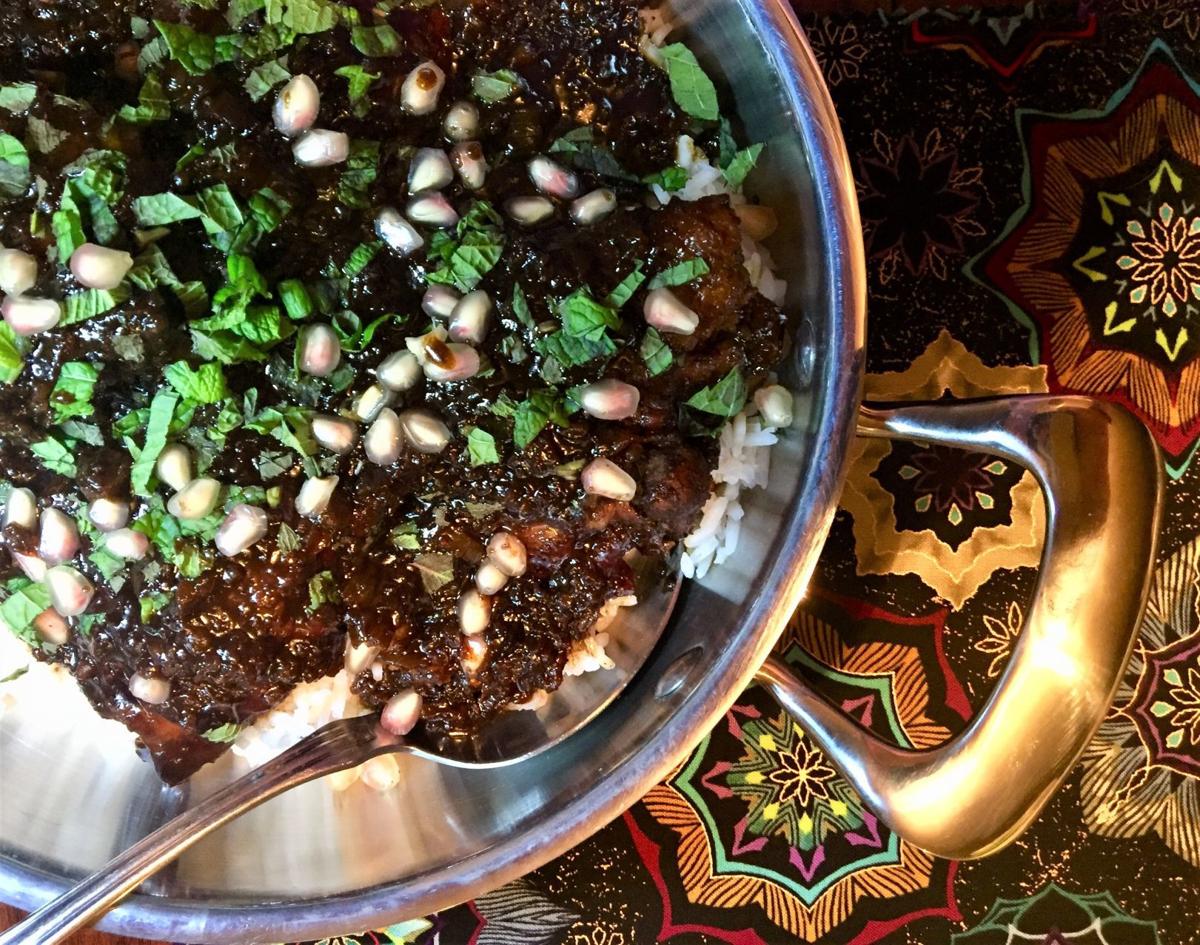Part of my neighbor’s pomegranate tree overarches a public walkway, so I filched a couple of low-hanging ripe fruit from its branches earlier this week. I hope she didn’t mind.
The fruit wasn’t the deep cherry red color that I associate with pomegranates. But the fruit was heavy, and its sides were squared, a sign that the seeds inside were pushing the fruit’s walls out as they ripened. Some pomegranate cultivars yield pale fruit, and Arizona’s iron-poor soils can also make for pale fruit. The same can be true for the arils — the little seeds inside. White or pale arils can be just as sweet as deep red ones, however.
I’ve had a love-hate relationship with pomegranates— love the juicy, sweet arils inside, but hate the mess of opening the fruit. Pomegranate juice stains anything it touches permanently. In fact, I’ve experimented with using it as a dye for the wool I spin into yarn. Depending on whether the wool is pretreated with alum, iron or another mordant, pomegranate juice produces colors ranging from rosy pink to lilac to purple. The fruit’s rinds can also work as a dyestuff, yielding colors ranging from sunny gold to pale yellow to various greens.
The other day, however, I tried a method of working with pomegranate that I’d read makes the whole process less messy. Wearing an old tee-shirt just in case, I sliced off both top and bottom of the fruit, then scored the leathery rind vertically in five or six places. Placing the fruit in a bowl filled with water, I could pull off the rind and the yellow chaff that holds the seeds with no errant juice spatters. After skimming the water of the debris, it was easy to strain the arils and put them into a refrigerator storage dish. When I finished, my old tee-shirt was still paint-dappled, but bore no pomegranate stains.
Some of those arils went into my Sunday supper of Fesenjan, a Persian dish of chicken thighs braised with pomegranate molasses and garnished with arils and fragrant, fresh chopped mint. The mahogany-colored sauce has a complex flavor profile — it’s both sweet and sour, with exotic notes from the cinnamon, saffron and cardamom. It’s a terrific dish for the cooler nights that lie ahead as we head into autumn.
Like most dishes from this ancient culture’s cuisine, the result is sophisticated and rustic at the same time — simple ingredients, simply prepared, but combined in surprising ways.
Chicken Fesenjan
Makes about 4 servings
Find pomegranate molasses, made from cooked-down pomegranate juice, at well-stocked grocery stores or Middle Eastern markets. It’s inexpensive, shelf-stable and stores for a long time. You can also make it yourself, by cooking pomegranate juice over high heat until it reduces to a syrup. Though this recipe calls for chicken, you can also make Fesenjan with lamb or beef stew meat.
Ingredients
1 1/2 cups walnut halves
4 large or 8 small skin-on, bone-in chicken thighs
1/2 teaspoon salt
1/4 teaspoon pepper
1 tablespoon oil
1 medium onion, finely chopped
1/2 teaspoon ground cinnamon
1/4 teaspoon saffron, optional, or turmeric
1/4 teaspoon ground cardamom
1 cup chicken broth
1/3 cup pomegranate molasses
2 tablespoons honey
Juice of 1 small lemon
Pomegranate arils and chopped fresh mint, for garnish
Cooked white or brown rice, for serving
Preparation
Heat the oven to 350 degrees. Spread the walnuts on a rimmed baking sheet. Roast the walnuts in the oven for 10 minutes, or until fragrant. Remove and allow to cool. Pulse the walnuts in a food processor until fairly finely ground, about the consistency of sand. Set aside.
Season the chicken with the salt and pepper. In a large shallow pan with a lid, heat the oil over medium-high heat until it shimmers. Add the chicken thighs, skin side down and cook without moving for five minutes, or until the skin is deeply browned. Turn the thighs and brown on the other side in the same way. Remove browned chicken to a plate and set aside.
Reduce heat to medium. In the same pan, add the onions. Cook, stirring occasionally, until the onion is translucent, about five minutes. Add the cinnamon, saffron or turmeric and ground cardamom; cook, stirring, for about 30 seconds to 1 minute. Add the chicken broth and stir to scrape up any browned bits.
Stir in the ground walnuts, pomegranate molasses and honey. Bring the mixture to a boil. Return the chicken to the pot and turn to coat with the sauce. Reduce heat to low and partially cover the pan. Simmer until the chicken is completely tender, about 30 minutes. Remove chicken to a clean plate and keep warm.
Add the lemon juice to the sauce. Taste and add more salt if needed. Bring the sauce to a boil over medium-high heat and cook, stirring often, until the sauce reduces by about a third, about 5 minutes. Serve the chicken on a bed of cooked rice, spooning the sauce over and garnishing with pomegranate seeds and chopped mint.





